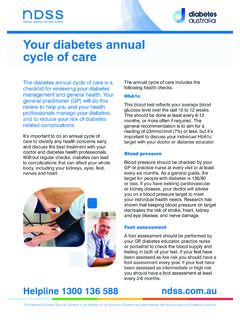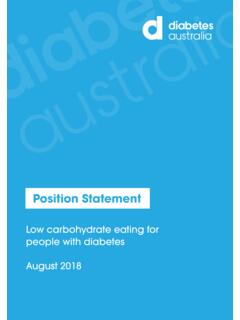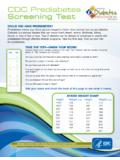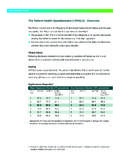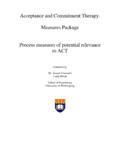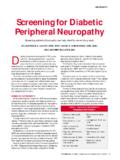Transcription of Problem Areas In Diabetes (PAID) scale
1 0 1 2 3 40 1 2 3 40 1 2 3 40 1 2 3 40 1 2 3 40 1 2 3 40 1 2 3 40 1 2 3 40 1 2 3 40 1 2 3 40 1 2 3 40 1 2 3 40 1 2 3 40 1 2 3 40 1 2 3 40 1 2 3 40 1 2 3 40 1
2 2 3 40 1 2 3 40 1 2 3 4 Problem Areas In Diabetes (PAID) scaleInstructions: Which of the following Diabetes issues are currently a Problem for you? Tick the box that gives the best answer for you. Please provide an answer for each having clear and concrete goals for your Diabetes care?Feeling discouraged with your Diabetes treatment plan?Feeling scared when you think about living with Diabetes ?Uncomfortable social situations related to your Diabetes care ( people telling you what to eat)?Feelings of deprivation regarding food and meals?Feeling depressed when you think about living with Diabetes ?Not knowing if your mood or feelings are related to your Diabetes ?Feeling overwhelmed by your Diabetes ?
3 Worrying about low blood glucose reactions?Feeling angry when you think about living with Diabetes ?Feeling constantly concerned about food and eating?Worrying about the future and the possibility of serious complications?Feelings of guilt or anxiety when you get off track with your Diabetes management?Not accepting your Diabetes ?Feeling unsatisfied with your Diabetes physician?Feeling that Diabetes is taking up too much of your mental and physical energy every day?Feeling alone with your Diabetes ?Feeling that your friends and family are not supportive of your Diabetes management efforts?Coping with complications of Diabetes ?Feeling burned out by the constant effort needed to manage Diabetes ? 1234567891011121314151617181920 Not a problemMinor problemModerate problemSomewhat serious problemSerious Problem Joslin Diabetes Center, 1999 ( ). All rights reserved. The copyright holder/developer has given permission for the questionnaire to be reproduced in this toolkit.
4 Readers of the toolkit are permitted to reproduce the questionnaire for clinical use and non-commercial research purposes. Readers of the toolkit are not permitted to use the questionnaire for commercial research purposes and must seek permission from the copyright holder/developer to do Problem Areas In Diabetes (PAID) scale1 is a well-validated, psychometrically robust questionnaire with 20 items. It is sometimes referred to as the PAID-20, to distinguish it from the five-item (PAID-5) and one-item (PAID-1) short How to use the PAID in clinical practiceRespondents are asked to indicate the degree to which each of the items is currently a Problem for them, from 0 (not a Problem ) to 4 (a serious Problem ). Clinically, the PAID can be used two ways: 1. Taking note of the higher scoring items and using these to start a conversation (sources of Diabetes distress).2. Calculating a total score ( to assess change over time). The total score provides an indication of the severity of Diabetes distress.
5 For tips about using questionnaires, see Using questionnaires to inform consultations (pages 10 and 11 in the handbook).3 Interpretation of scoresThe scores for each item are summed, then multiplied by to generate a total score out of 100. Total scores of 40 and above: severe Diabetes Individual items scored 3 or 4: moderate to severe distress;5 to be discussed during the consultation following completion of the Polonsky WH, Anderson BJ, et al. Assessment of Diabetes -related distress. Diabetes Care. 1995;18(6) McGuire BE, Morrison TG, et al. Short-form measures of Diabetes -related emotional distress: The Problem Areas In Diabetes scale (PAID)-5 and PAID-1. Diabetologia. 2010;53(1) Hendrieckx C, Halliday JA, et al. Diabetes and emotional health: a handbook for health professionals supporting adults with type 1 or type 2 Diabetes . Canberra: National Diabetes Services Scheme, Snoek FJ, Kersch NYA, et al.
6 Monitoring of Individual Needs in Diabetes (MIND): baseline data from the cross-national Diabetes Attitudes, Wishes, and Needs (DAWN) MIND study. Diabetes Care. 2011;34(3) Snoek FJ, Kersch NYA, et al. Monitoring of individual needs in Diabetes (MIND)-2: follow-up data from the cross-national Diabetes Attitudes, Wishes, and Needs (DAWN) MIND study. Diabetes Care. 2012;35(11) and emotional health: A toolkit for health professionals supporting adults with type 1 or type 2 Diabetes Diabetes and emotional health handbook and related toolkit The Commonwealth of Australia 2016. All rights reserved. Gonder-Frederick, L 1994. The copyright holder/developer has given permission for the questionnaire to be reproduced in this handbook. Readers of the handbook are permitted to reproduce the questionnaire for clinical use and non-commercial research purposes. Readers of the handbook are not permitted to use the questionnaire for commercial research purposes and must seek permission from the copyright holder/developer to do Hypoglycaemia Fear Survey-II Worry (HFS-II W) scaleInstructions: Below is a list of concerns people with Diabetes sometimes have about low blood glucose.
7 Please read each item carefully (do not skip any). Place an X in the box that best describes how often in the last six months you worried about each item because of low blood 1 2 3 40 1 2 3 40 1 2 3 40 1 2 3 40 1 2 3 40 1 2 3 40 1 2 3 40 1 2
8 3 40 1 2 3 40 1 2 3 40 1 2 3 40 1 2 3 40 1 2 3 40 1 2 3 40 1 2 3 40 1 2 3 40 1 2 3 40 1 2 3 412 3456789101112131415161718 NeverRarelySometimesOftenAlmost alwaysBecause my blood glucose could go low, I worried recognising/realising I was having low blood glucosenot having food.
9 Fruit or juice availablepassing out in publicembarrassing myself or my friends in a social situationhaving a hypo while aloneappearing stupid or drunklosing controlno one being around to help me during a hypohaving a hypo while driving making a mistake or having an accidentgetting a bad evaluation or being criticiseddifficulty thinking clearly when responsible for othersfeeling lightheaded or dizzyaccidently injuring myself or otherspermanent injury or damage to my health or bodylow blood glucose interfering with important things I was doingbecoming hypoglycaemic during sleepgetting emotionally upset and difficult to deal withDiabetes and emotional health: A toolkit for health professionals supporting adults with type 1 or type 2 diabetesBackgroundThe Hypoglycaemia Fear Survey-II Worry scale (HFS-II W) is an 18-item subscale of the It was developed to assess specific concerns people with Diabetes may have related to their risk of having hypoglycaemia.
10 How to use the HFS-II Worry scale in clinical practiceRespondents are asked to indicate how much they worried about each item during the last six months. This timeframe can be adapted. Each item is measured on a five-point scale ranging from 0 (never) to 4 (almost always). Take note of the higher scoring items (especially scores of 3 and 4) and use these to start a conversation about their worries about hypoglycaemia. For tips about using questionnaires, see Using questionnaires to inform consultations (pages 10 and 11 in the handbook).2 References1. Gonder-Frederick LA, Schmidt KM, et al. Psychometric properties of the Hypoglycemia Fear Survey-II for adults with type 1 Diabetes . Diabetes Care. 2011;34(4) Hendrieckx C, Halliday JA, et al. Diabetes and emotional health: a handbook for health professionals supporting adults with type 1 or type 2 Diabetes . Canberra: National Diabetes Services Scheme, 2016. Diabetes and emotional health handbook and related toolkit The Commonwealth of Australia 2016.
